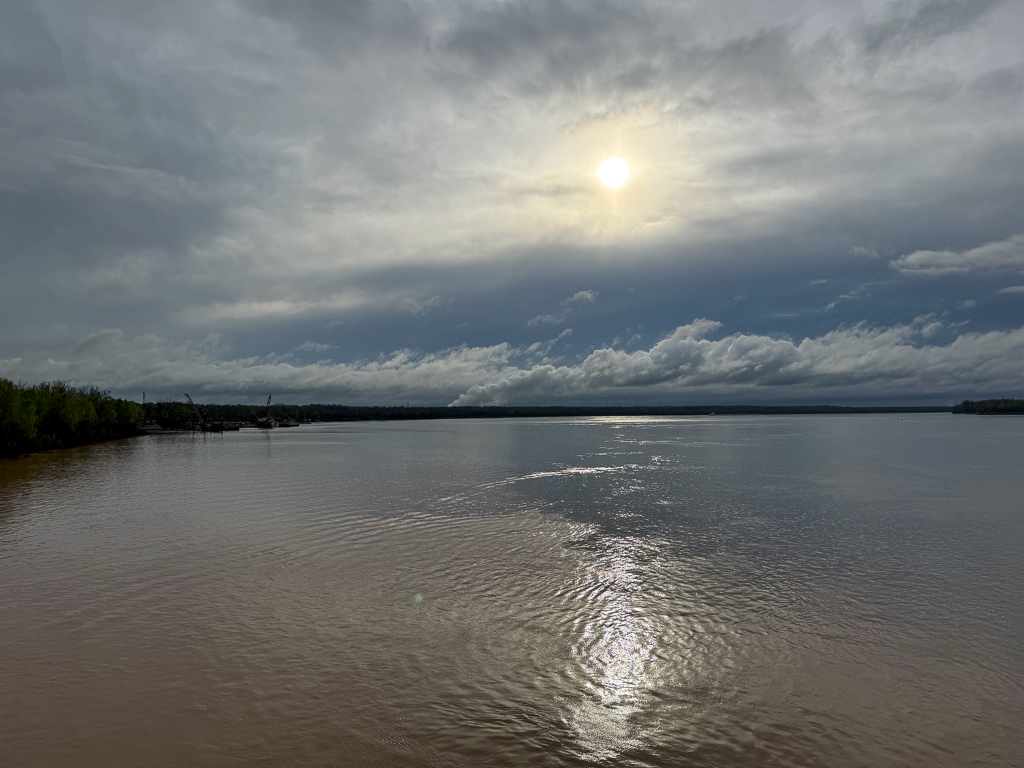
We docked at the edge of Bayou Sara in West Feliciana Parish early this morning; today’s excursions would take us in and around St. Francisville. Our first excursion took us to Rosedown and Catalpa Plantation Houses. Both were originally owned by the same extended family and were cotton plantations.
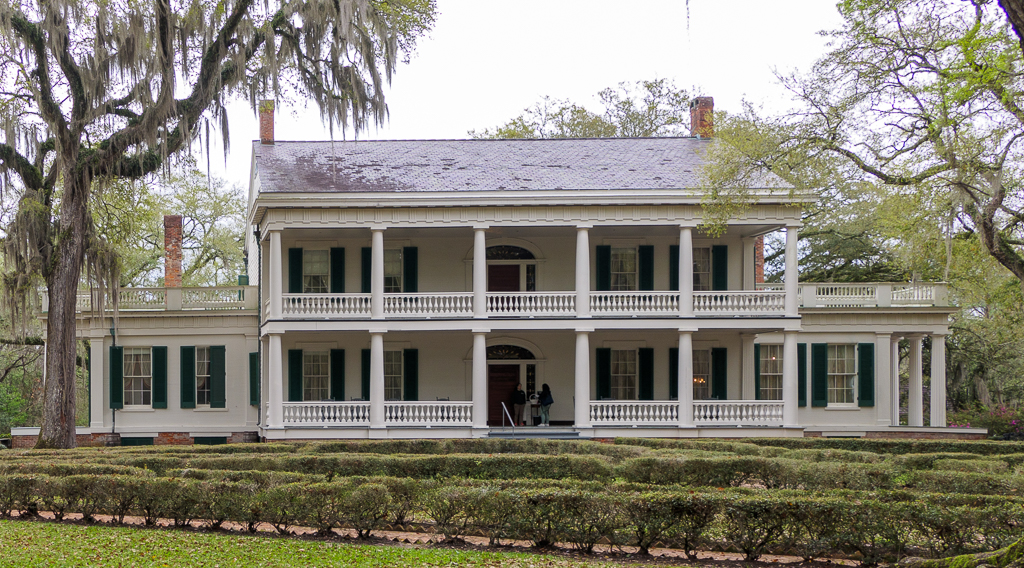
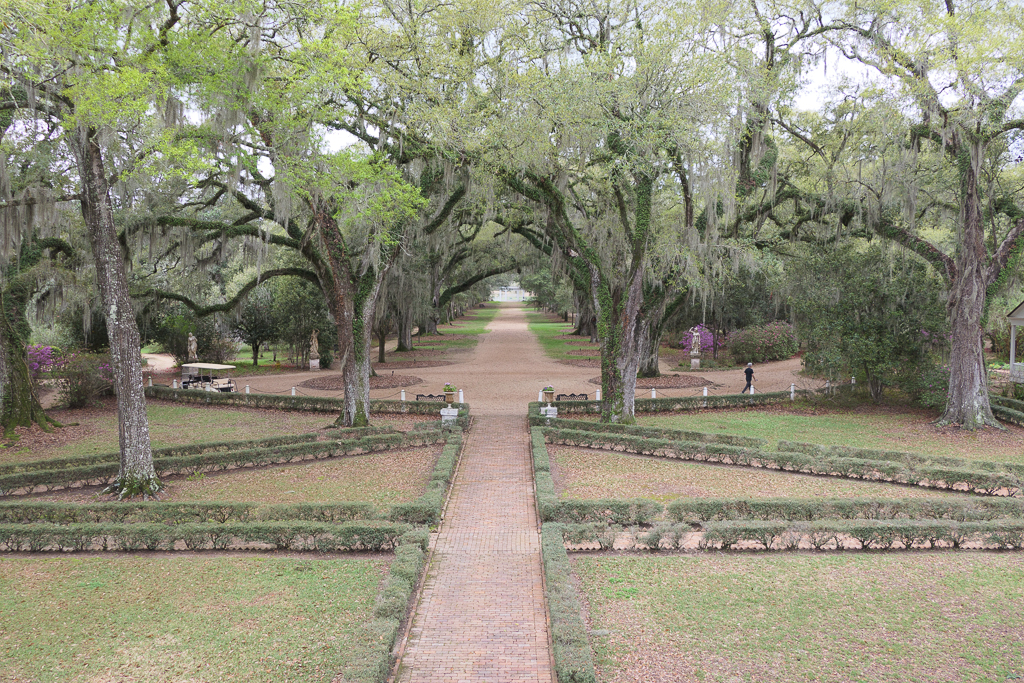
Rosedown is the older of the two plantations, originally built in 1834 by the Turnbull family. It originally occupied a plot of land seven miles long (3455 acres total), but most of the land has been sold off over the years. Like all Louisiana plantations, it ran on the labor of enslaved people, both inside the house and out in the fields. The owners were fabulously wealthy and furnished the house accordingly.

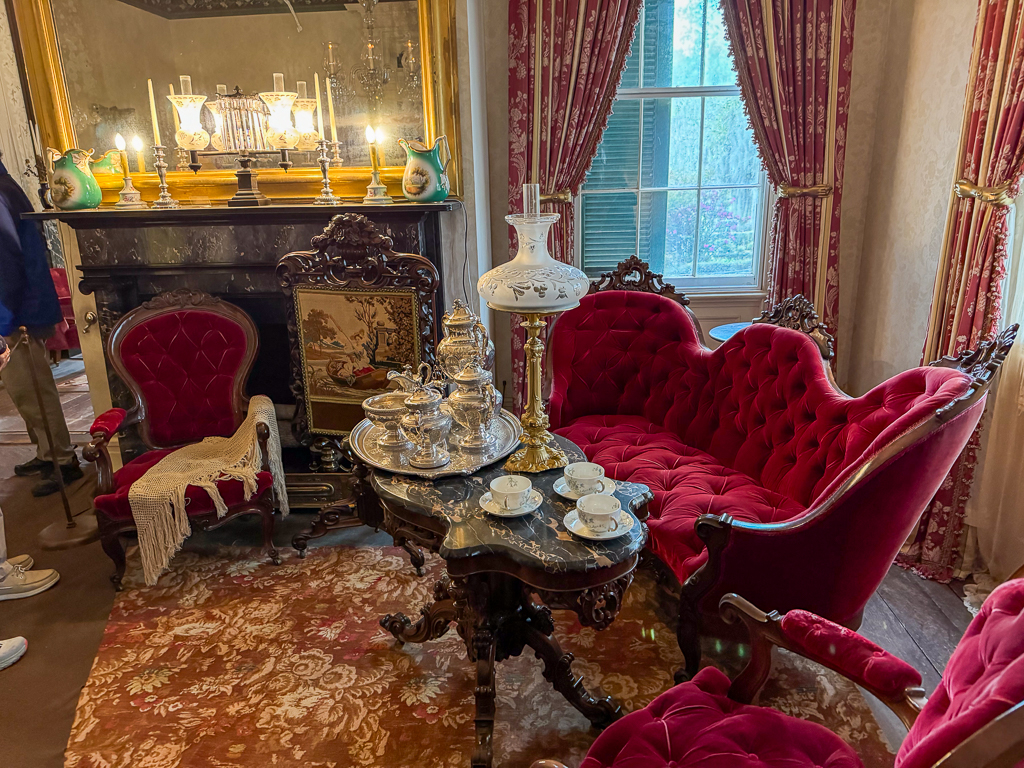
This tapestry was sewn by Martha Washington.
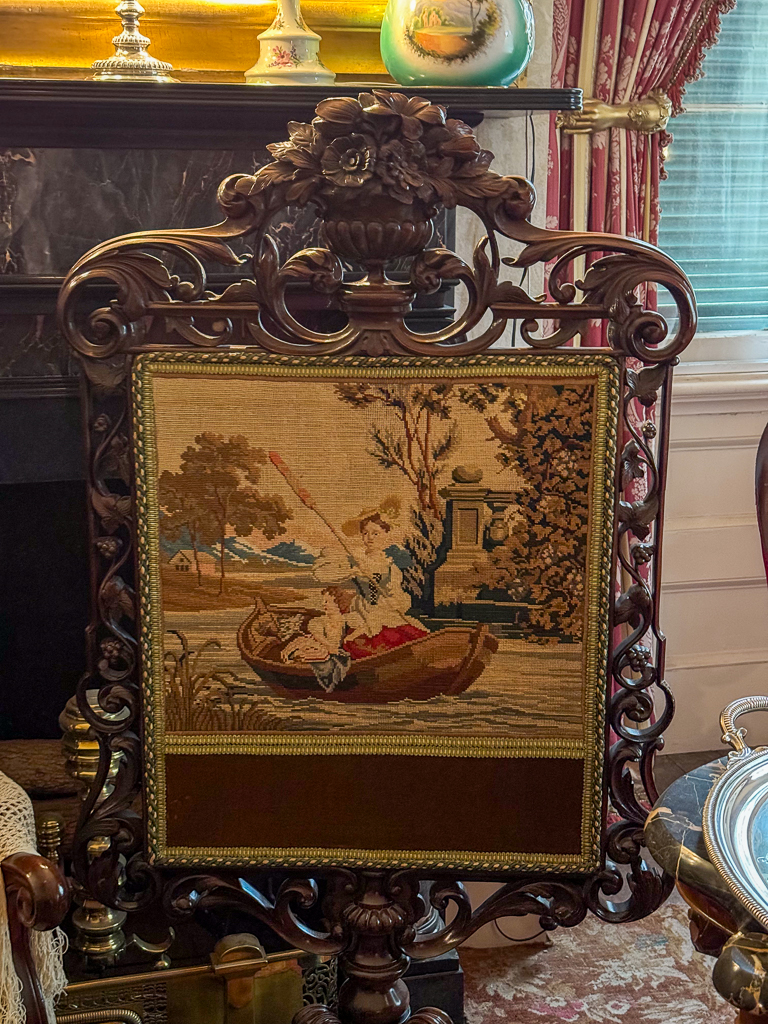
The children were home-schooled, of course.
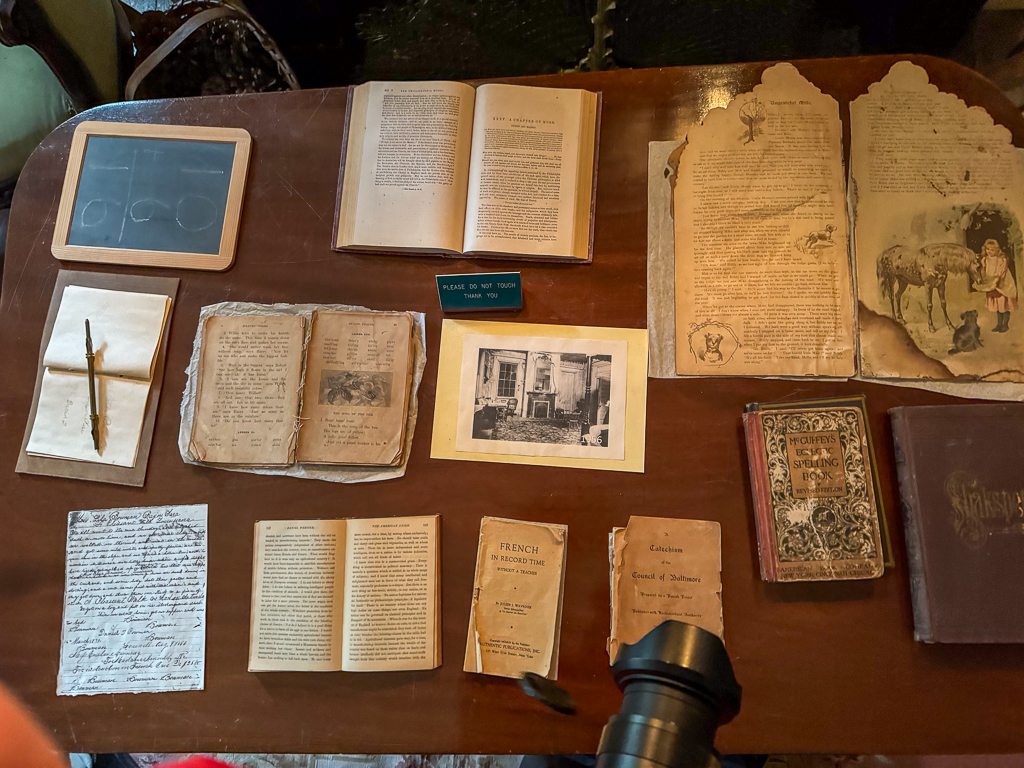
Today, the house is part of the Rosedown State Historic Site.
In contrast, Catalpa is still owned and lived in by descendents of its first owner, William Fort, whose wife was the daughter of Sarah Turnbull of Rosedown. The house was severely damaged during the Civil War, but it survived…until 1885, when it burned down. The house we visited was built a few months after the fire on the footprint of the original house.
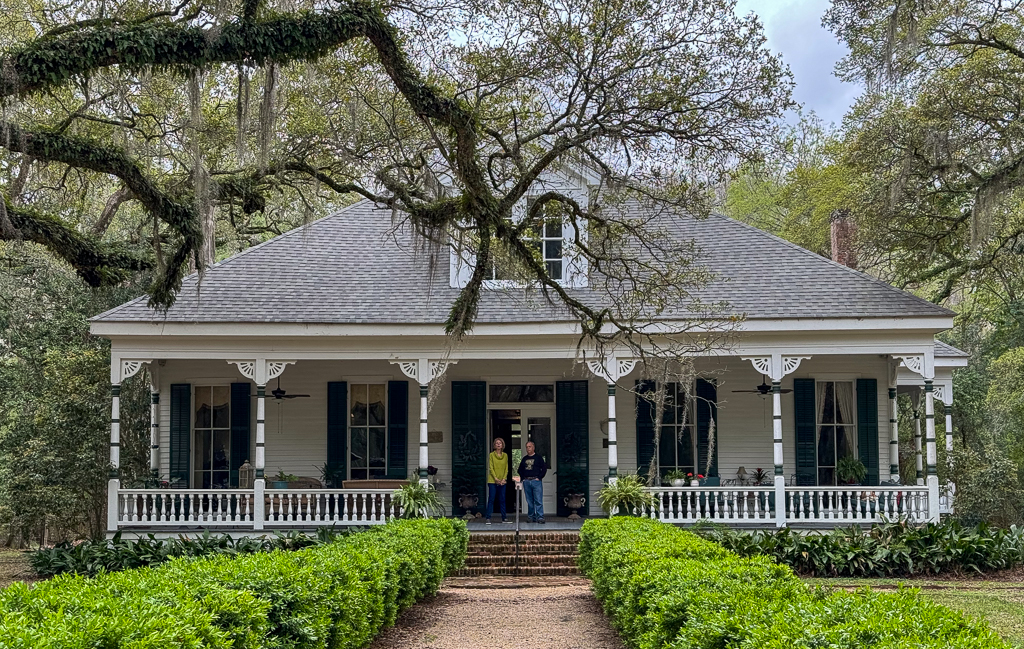
We were greeted by Mary, the owner, and given a tour (and a glass of sherry!).
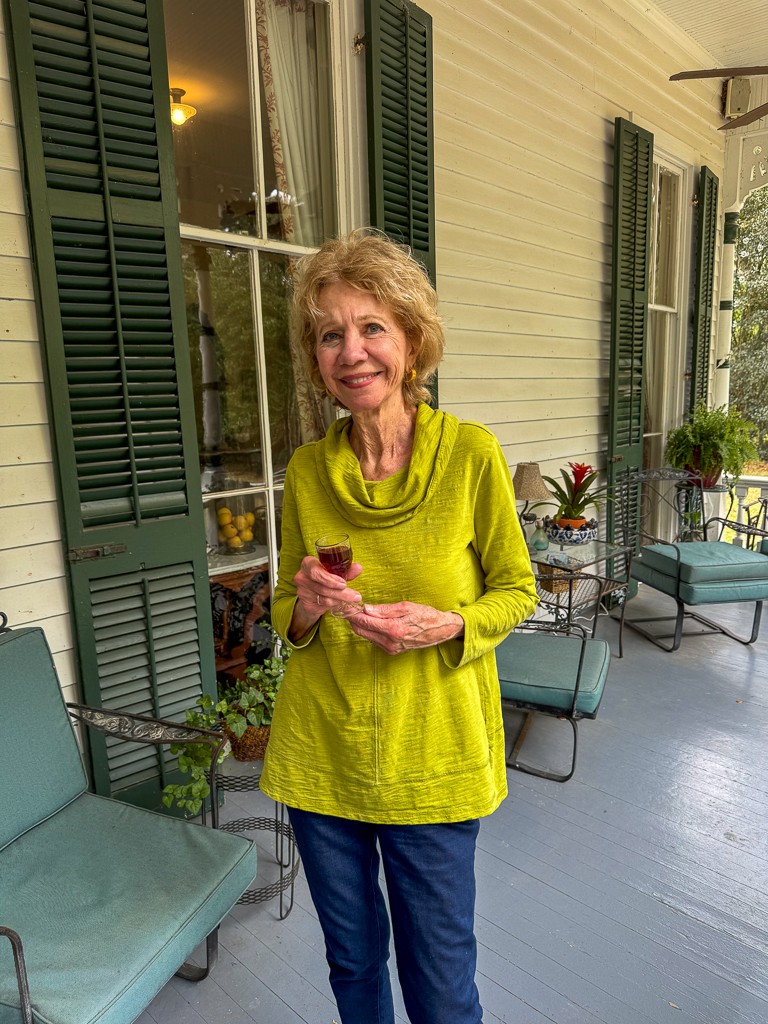
The house was filled with wonderful antiques, like this Sevres lamp.
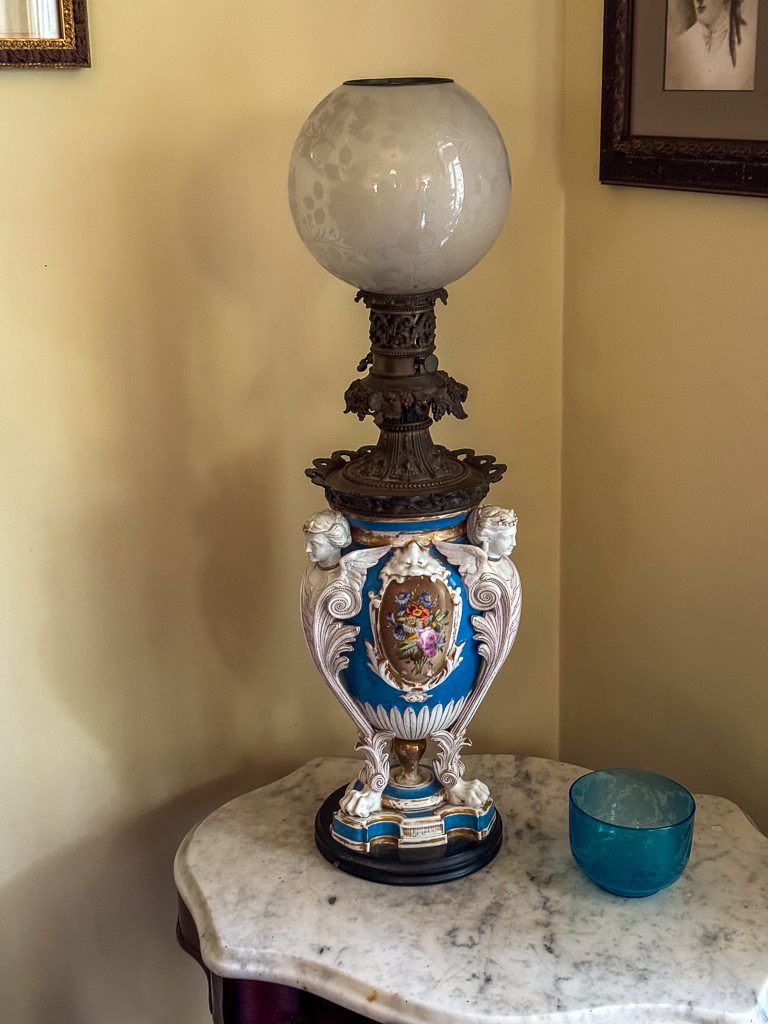
This fireplace is actually cast iron – even the bricks.
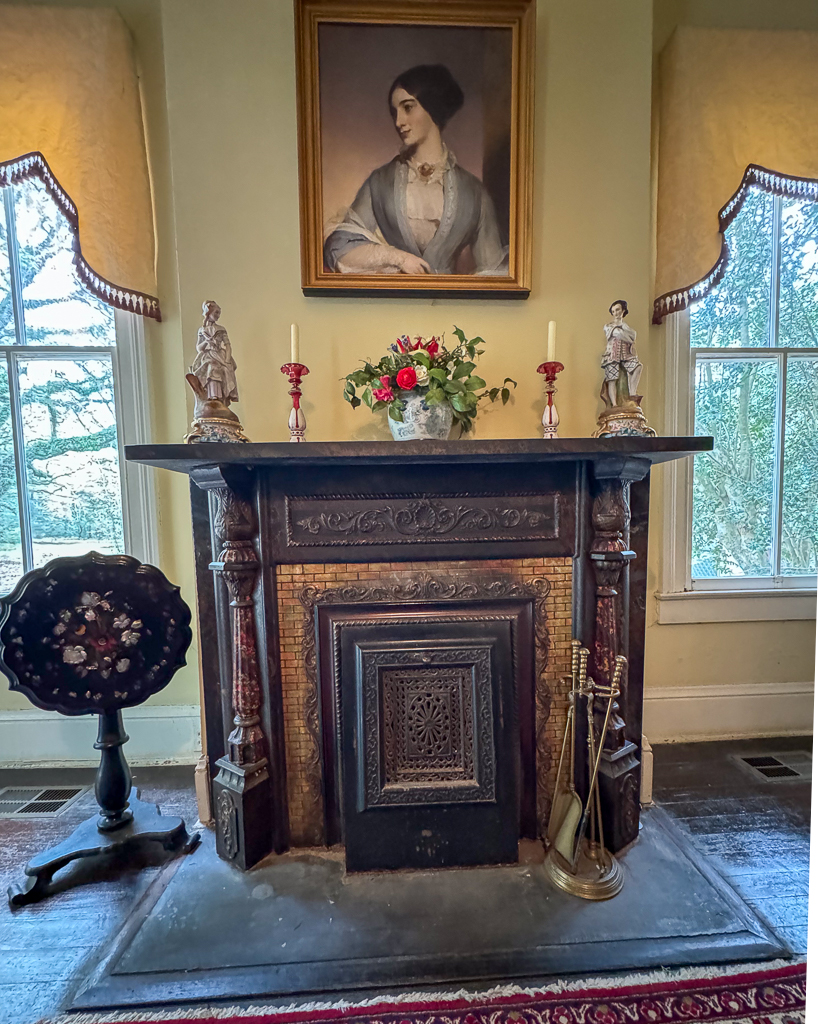
The family was well-connected, and was even invited to attend Mardi Gras parties thrown by the Krewe of Rex in New Orleans.
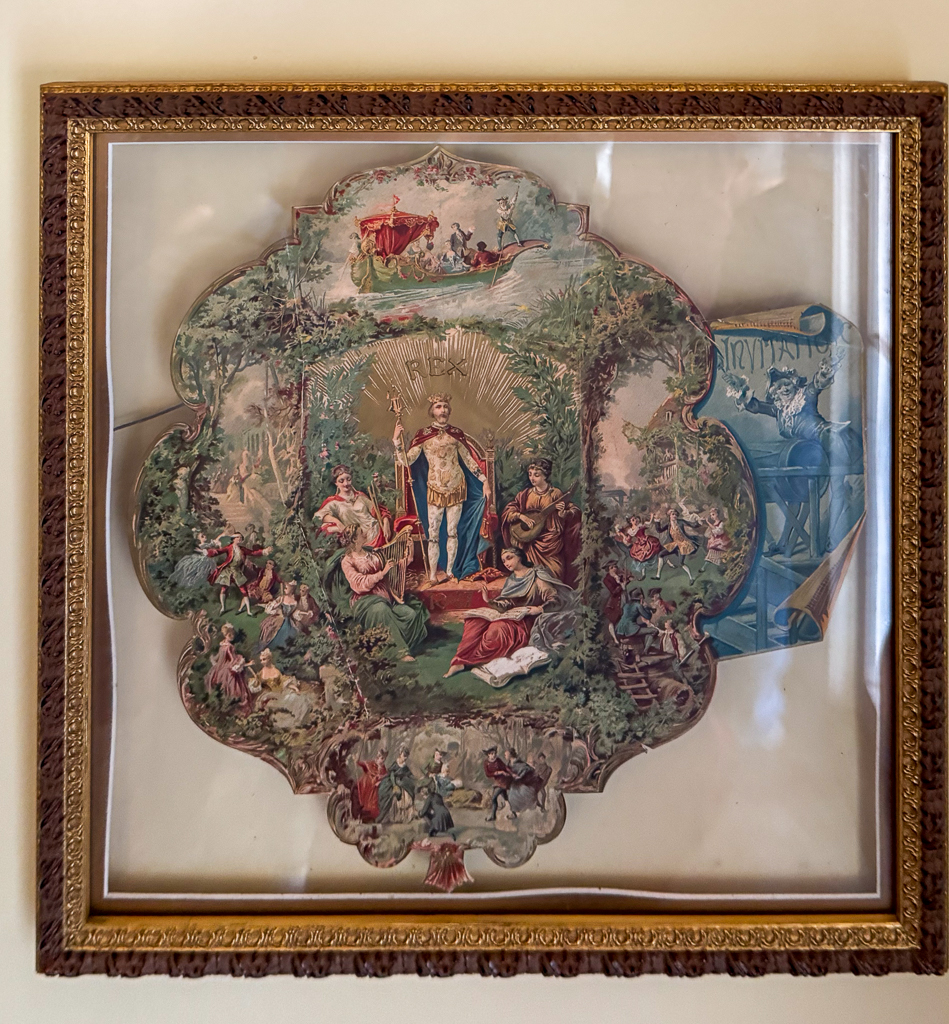
The family were also fashionistas; this is a 3-D illustration of the latest fashion from Paris.
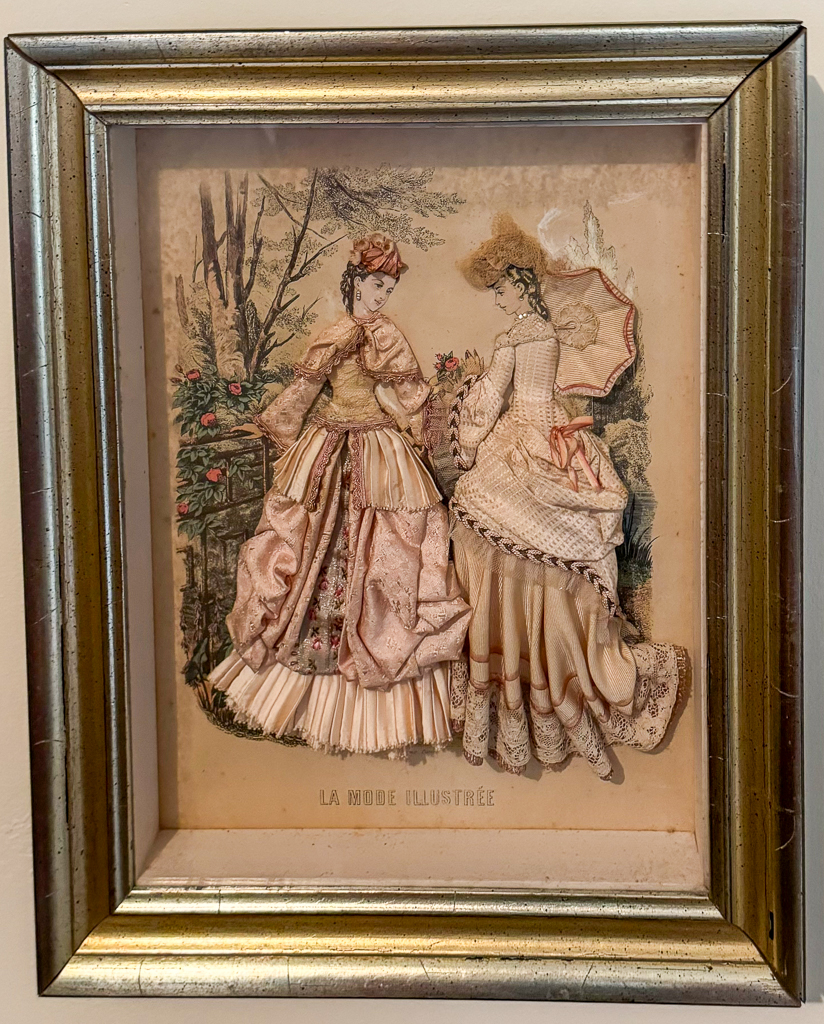
Mary had the Spanish Land Grant for Catalpa on display.
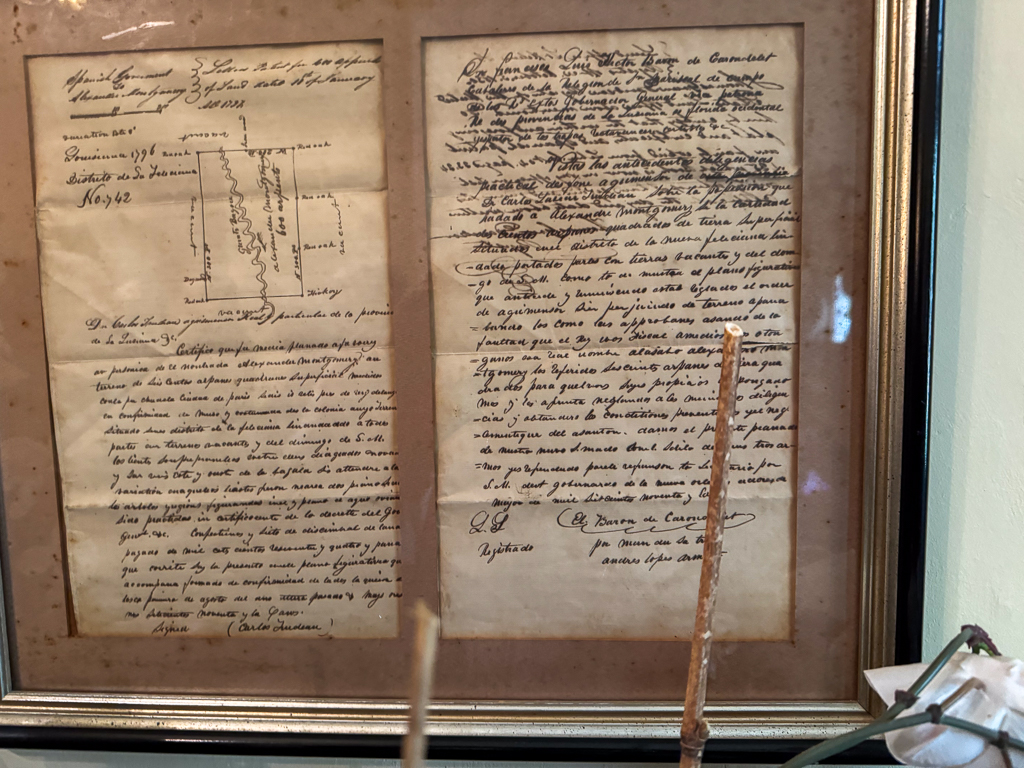
I really enjoyed visiting Catalpa and hearing Mary tell about her life and family history; Rosedown was grander, but Catalpa made me want to come back.
This afternoon, I went to Port Hudson State Historic Park to learn about the Battle of Port Hudson. We walked out to Fort Desperation to see the earthworks that the Confederates had erected, like this dry moat (well, it was dry in 1862; the recent rains have turned it into a mosquito hotspot, and I have the bites to prove it).
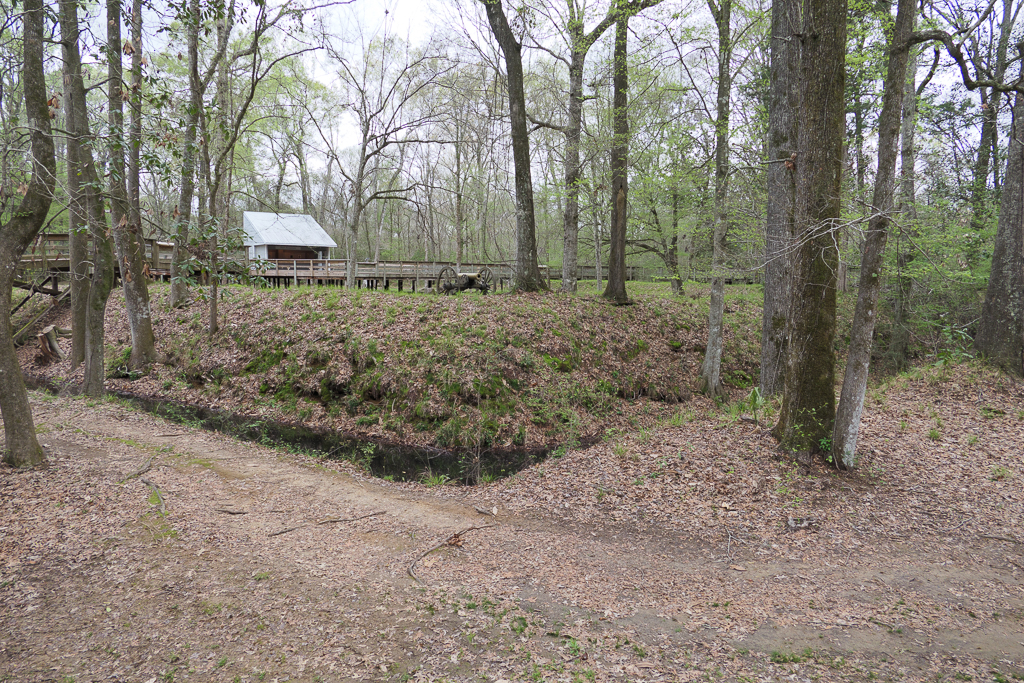
The Confederates repelled two Union assaults but were eventually starved out after the longest full siege in American history and surrendered a few days after Vicksburg, giving the Union full control over the Mississippi and cutting the Confederacy in two.
We also visited the museum on site, where we saw many artifacts recovered from the battlefield and saw (and heard) them fire a cannon.
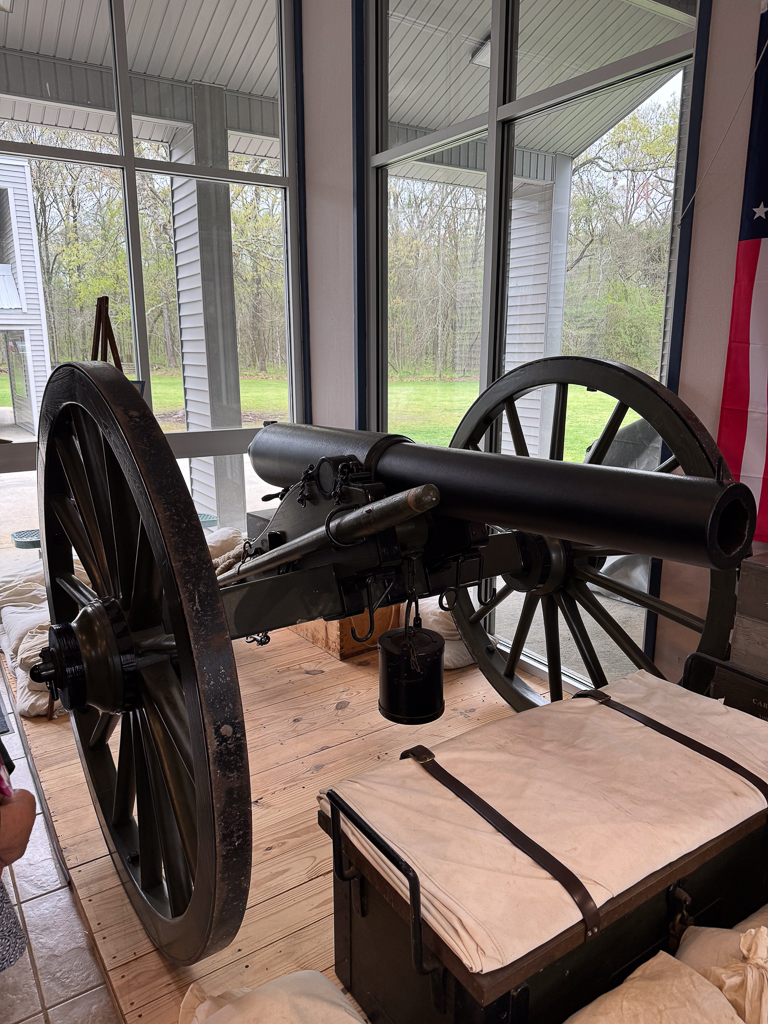
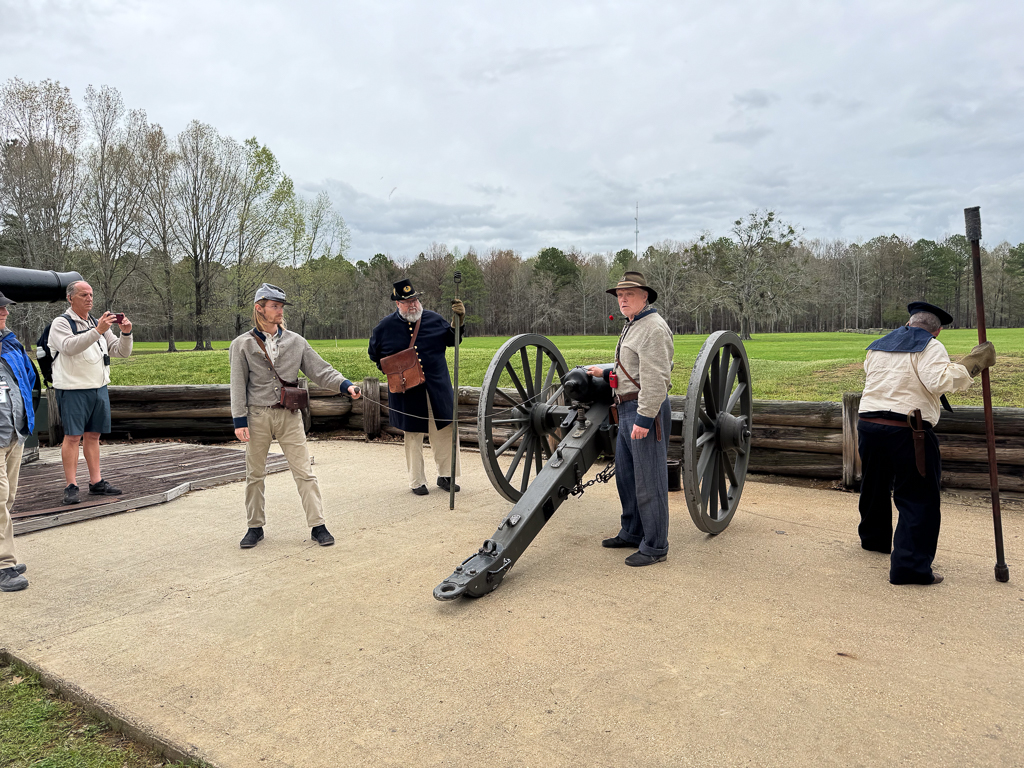
While I was at Port Hudson, Diane was exploring St. Francisville. People who live close to the Mississippi have to worry about flooding, so they build their houses on cinderblock stilts.
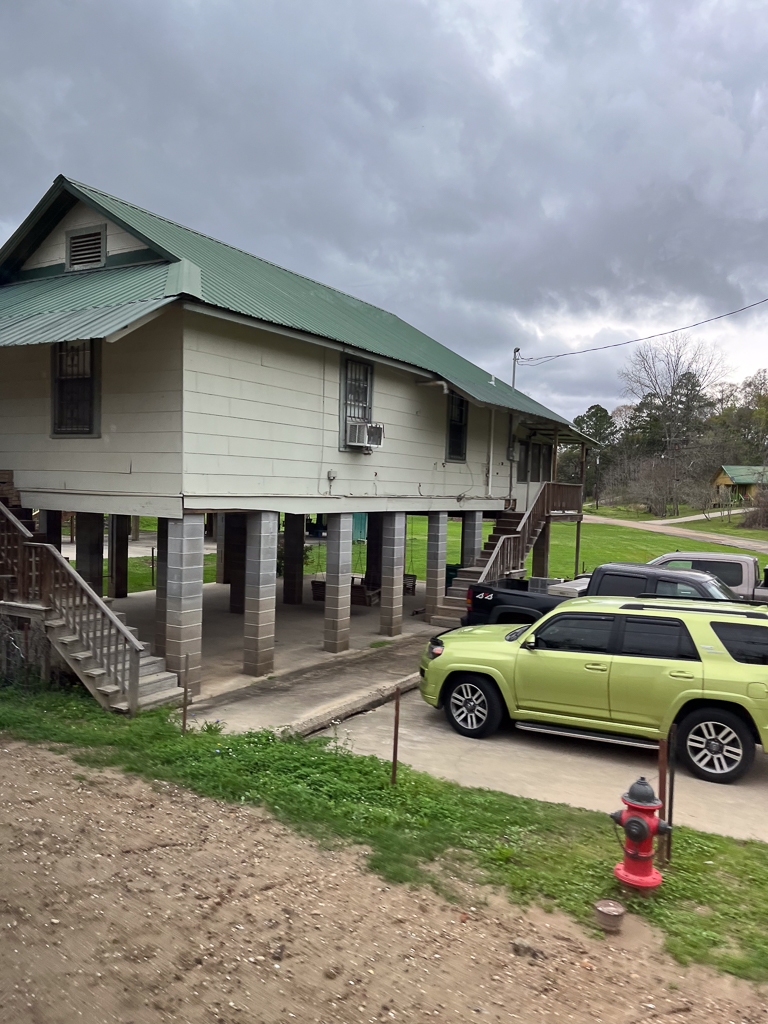
The houses in town are prettier.
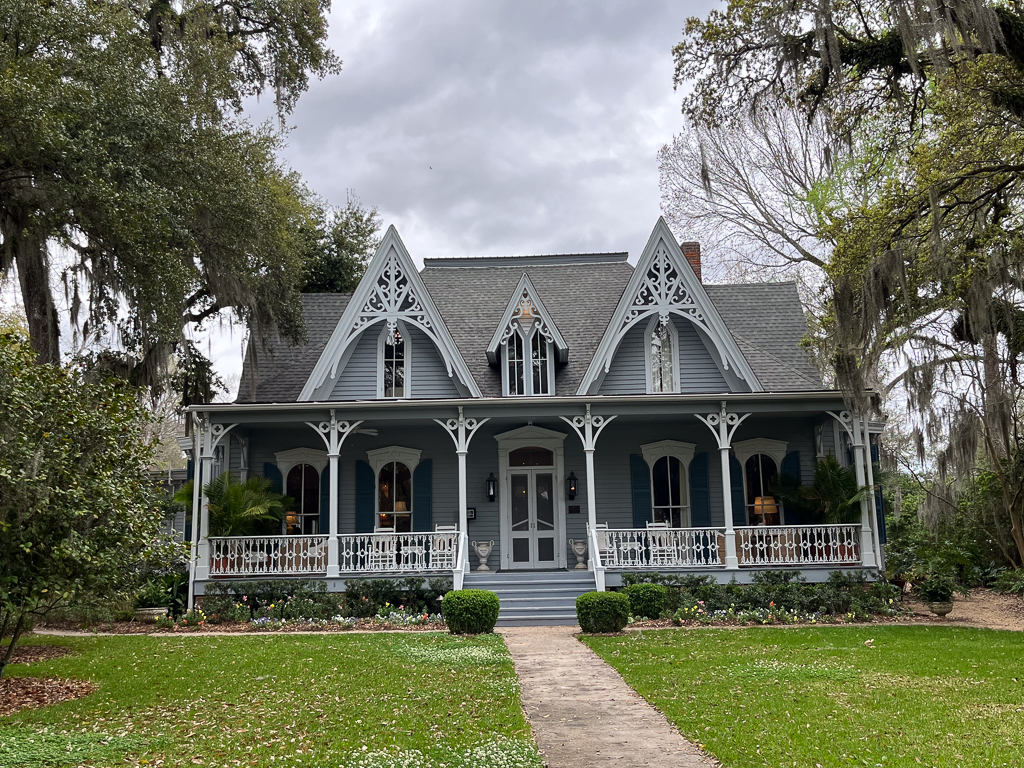
St. Francisville was our last stop in Louisiana; it’s been a good visit.